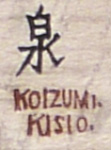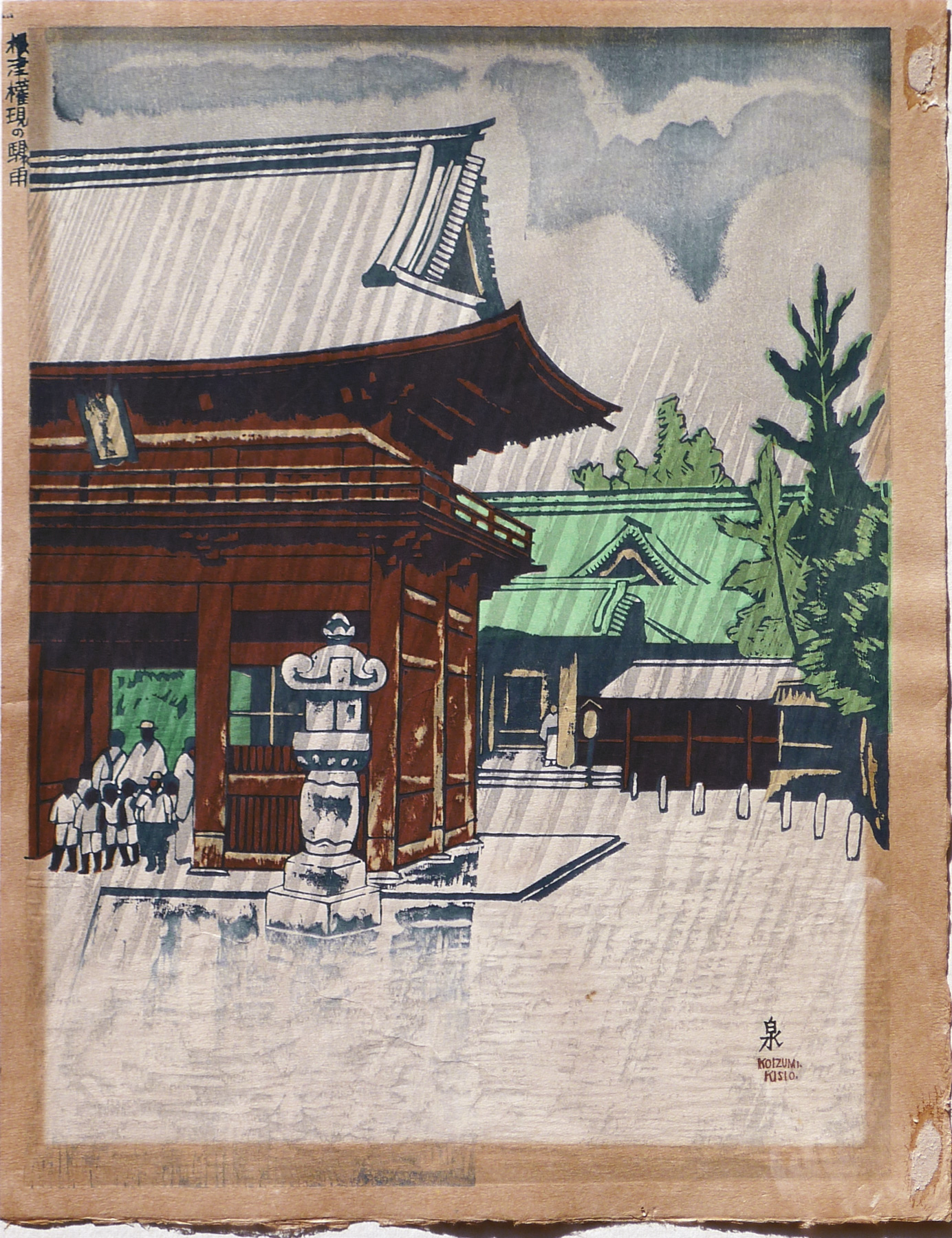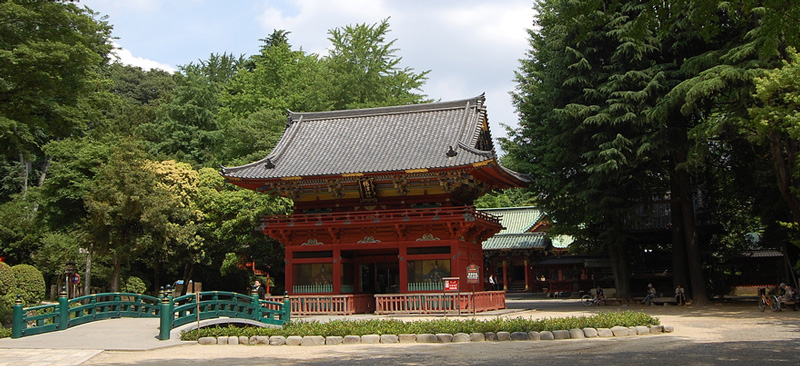About This Print
Number eight-one of the one hundred prints that make up the series Showa dai Tokyo hyakuzue (One Hundred Pictures of Great Tokyo During Showa). Koizumi started this series in 1928 and completed it twelve years later in 1940. In this print, Koizumi presents us with a truncated view of the two-story Rōmon Gate (楼門) with the Haiden worship hall in the background. A group of children and adults seek shelter under the gate.For more information on this series see "The Series - One Hundred Pictures of Great Tokyo During Showa (Showa dai Tokyo hyakuzue)" under the artist's biography.
Artist's Annotation
Source: MIT Visualizing Cultures website http://ocw.mit.edu/ans7870/21f/21f.027/tokyo_modern_02/annotation.htmlIn 1940, Koizumi created woodblock print charts containing print titles, dates, and comments for this series. His comment for this print follows:
“The patina on this National Treasure shrine islovely but the temple surroundings seem lonely and poorly kept.”
Nezu Shrine Today
Source: Japan National Tourism Organization website http://www.jnto.go.jp/eng/location/spot/shritemp/nezujinja.html and wikipedia http://en.wikipedia.org/wiki/Nezu_Shrine
Nezu Shrine (根津神社 Nezu-jinja) is a Shinto shrine located in Bunkyō, Tokyo, Japan. The Shrine "is said to have been established over 1,900 years ago by the legendary priest Yamato Takeru no Mikoto in Sendagi with Susanoo no Mikoto as the chief deity. In the Edo Period (1600-1867), the 5th shogun Tsunayoshi relocated it from Sendagi to Nezu to commemorate the adoption of Ienobu as his successor and the 6th shogun Ienobu chose it as the guardian deity. The Gongen-style architectures (typical of modern shrines) of Honden (main sanctuary), Haiden (worship hall), Heiden (offering hall), Karamon (Chinese-style gate), Romon (two-story gate) and Sukibei (lattice-windowed wall) are designated as nationally Important Cultural Properties."
Print Details
| IHL Catalog | #975 |
| Title | Shower at Nezu Shrine 根津権現の驟雨 - Kanji title upper left margin |
| Series | One Hundred Pictures of Great Tokyo in the Showa Era Showa dai Tokyo hyakuzue 昭和大東京百図絵 |
| Reference Number | #81 (artist's annotated portfolio list from c. 1940) |
| Artist | Koizumi Kishio (1893-1945) |
| Signature |  |
| Seal | |
| Publication Date | originally September 1936. This print may be post-WWII edition. |
| Edition | unknown |
| Publisher | likely self-published; some sources list publisher as Asahi Press (see "The Publisher of the Series" under the artist's bio Koizumi Kishio.) |
| Impression | excellent |
| Colors | excellent |
| Condition | fair - minor toning and heavy mat line; mounting residue in upper and lower right margin; tape stains in corners verso |
| Miscellaneous | this print was mounted in an acidic mat as sold. "Made in Occupied Japan" was stamped on the back of the mat as shown below. This stamp was required to be placed on export items by the U.S. occupation authorities from late 1945 through the lifting of the order in April 1952. |
| Genre | sosaku hanga (creative prints) |
| Format | dai oban |
| H x W Paper | 15 1/2 x 12 1/8 in. (39.4 x 30.8 cm) |
| H x W Image | 14 3/4 x 11 in. (37.5 x 27.9 cm) |
| Collections This Print | The National Museum of Modern Art, Tokyo P00131-036; The Wolfsonian at Florida International University TD1993.69.1.18 |
| Reference Literature | Tokyo: The Imperial Capital Woodblock prints by Koizumi Kishio, 1928-1940,Marianne Lamonaca, The Wolfsonian-Florida International University, 2004, p. 98. |



